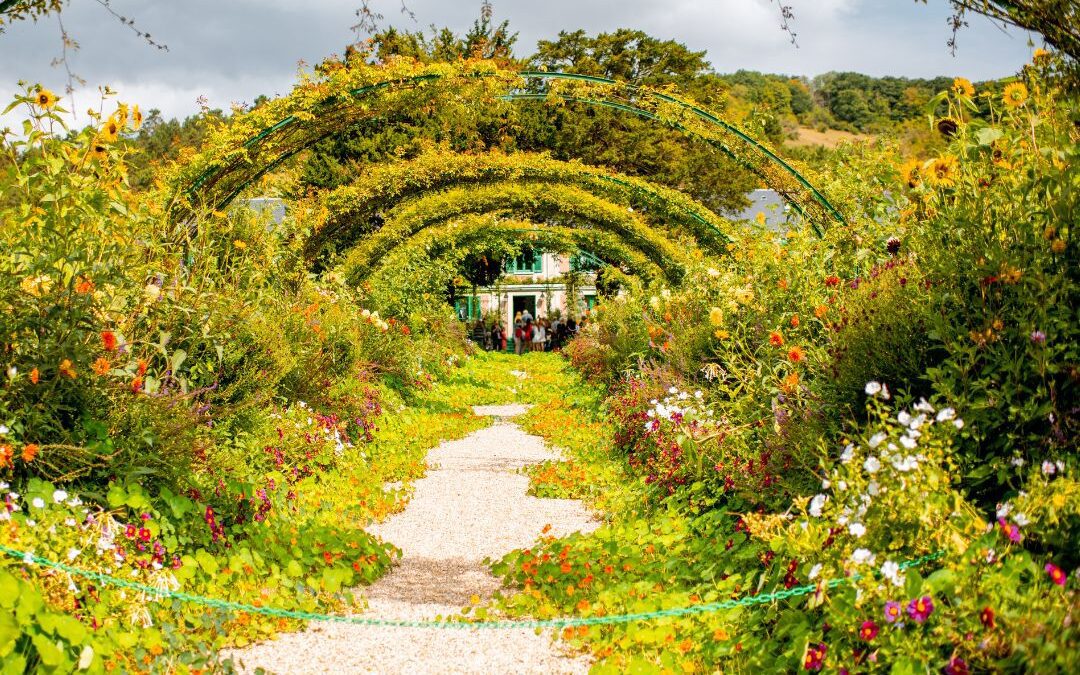We partner with select companies whose products and/or services we love! Some of the links on this page may be affiliate links, which means if you purchase an item using the link, we may receive a small commission (at no added cost to you). We appreciate your support.
I’ve liked nasturtiums since I saw them in Monet’s paintings of the garden at Giverny. The bright and bold trailing plant would blur the gravel pathway, creating an inviting narrow and meandering opening under an archway of roses.
I started loving nasturtiums when I saw images of the colorful plant trailing down in the courtyard of the Isabella Stewart Gardner Museum in Boston. Known as the Hanging Nasturtium installation, the long tendrils drop down an incredible distance, sometimes as long as twenty feet. The nasturtiums in this magical display take about a year to grow with plants weighing as much as fifty pounds.
I got lucky this summer, and my nasturtiums have come back into my vegetable garden without me having to plant them. Nasturtium will help themselves to your garden by readily self-seeding. Excited to see them, I decided to see how I can use them.
I originally planted nasturtiums in the vegetable garden for five reasons: They are easy to grow, they are beautiful in the garden, they are lovely cut flowers to decorate with, yummy and healthy to eat, and because they protect some vegetables in the garden from pests.
Nasturtiums Are Easy to Grow
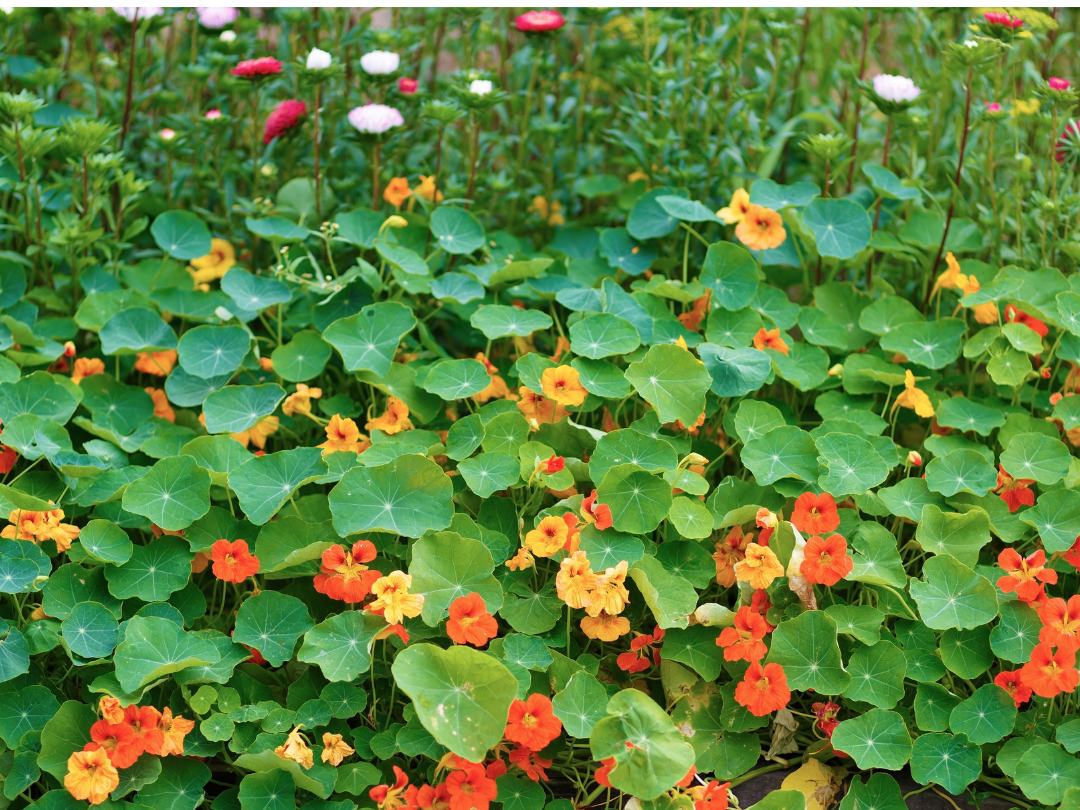
Nasturtiums are so easy to grow (so easy, in fact, that they are often one of the first plants recommended for a children’s garden).
Nasturtiums like full sun but will take some shade in hotter climates. They can take off in the ground or in a pot and can survive on little water once established. They are such survivalists that in some warm areas they are considered invasive!
Nasturtiums Are Beautiful
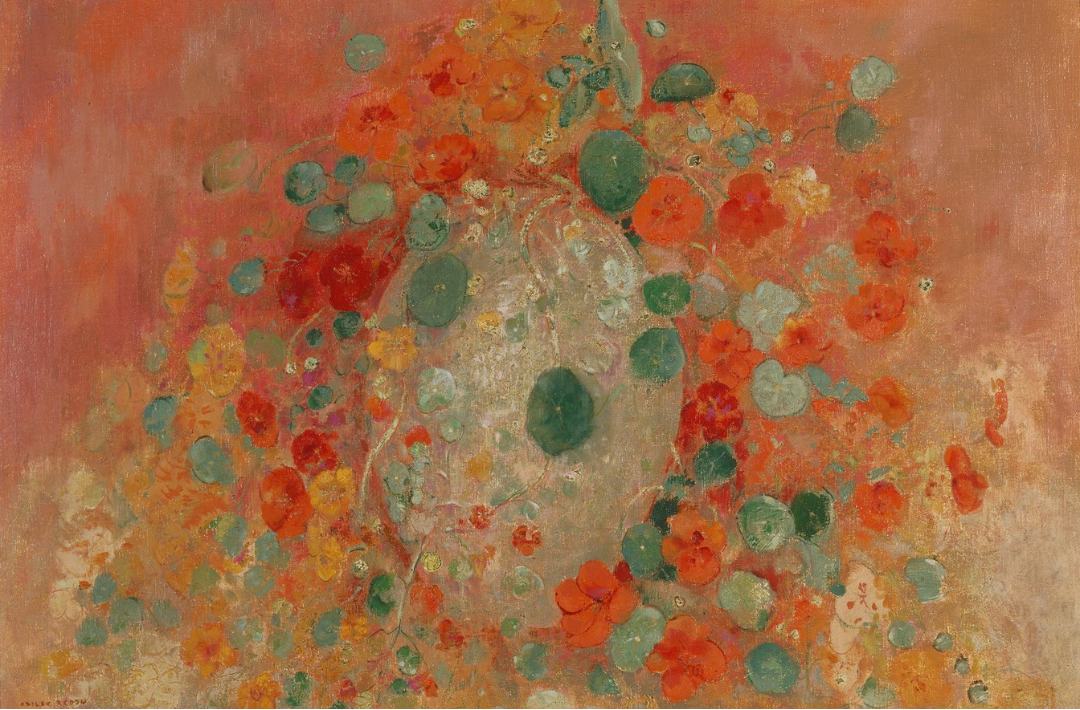
Nasturtiums provide beauty in the garden as well as in art. Besides Monet’s paintings of Giverny, Henri Matisse included them in his paintings. Odilon Redon dedicated a painting to them entitled Nasturtiums (pictured above).
Nasturtiums Are Good Cut Flowers
Nasturtiums In a Vase: Nasturtiums can be added to floral arrangements and should last about a week. The cheery flowers add bright color to a bouquet and look lovely by themselves.
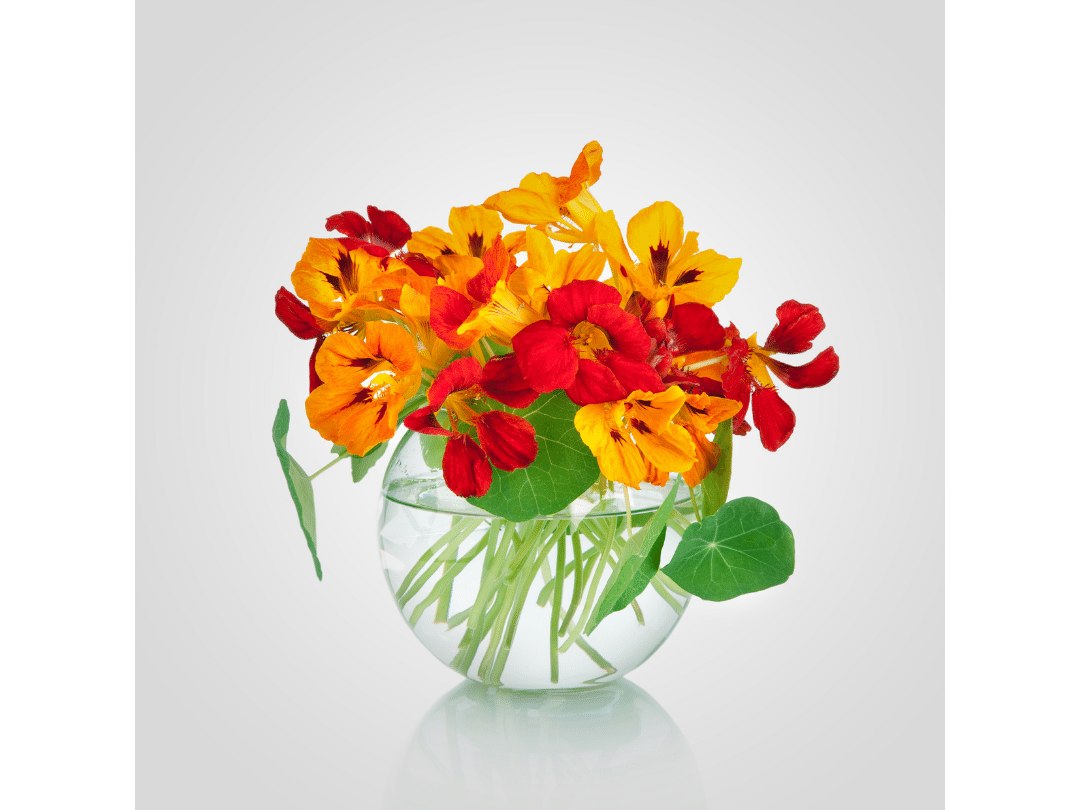
Nasturtiums on a Platter: You may see nasturtiums decorating crudité platters. They add color and can truly spice up a dish.
Nasturiums for a Lei: The flowers can last about half a day out of water, making them an option for a lei or hanging arrangement.
Nasturtiums Are Edible and Good for You
Besides looking good you can pop the flower, leaves and stems right into your mouth! The consumption of flowers as food is called floriphagia. And floriphagia can be good for you.
According to a 2018 article published in the National Institute of Public Health:
“Medicinal plants such as the garden nasturtium contain trace elements and bioactive compounds which can be easily absorbed by the human body. The flowers and other parts of the garden nasturtium are a good source of micro elements such as potassium, phosphorus, calcium and magnesium, and macro elements, especially of zinc, copper and iron. The essential oil, the extract from the flowers and leaves, and the compounds isolated from these elements have antimicrobial, antifungal, hypotensive, expectorant and anticancer effects. Antioxidant activity of extracts from garden nasturtium is an effect of its high content of compounds such as anthocyanins, polyphenols and vitamin C. Due to its rich phytochemical content and unique elemental composition, the garden nasturtium may be used in the treatment of many diseases for example the illnesses of the respiratory and digestive systems.”
Nasturtium in an Edible Bouquet
Nasturtium make good cut flowers and could be part of an edible bouquet arrangement that could include other edible flowers. Each of the flowers below deserve much more written about them, but briefly, here is a list of edible cut flowers that you could grow in a garden.
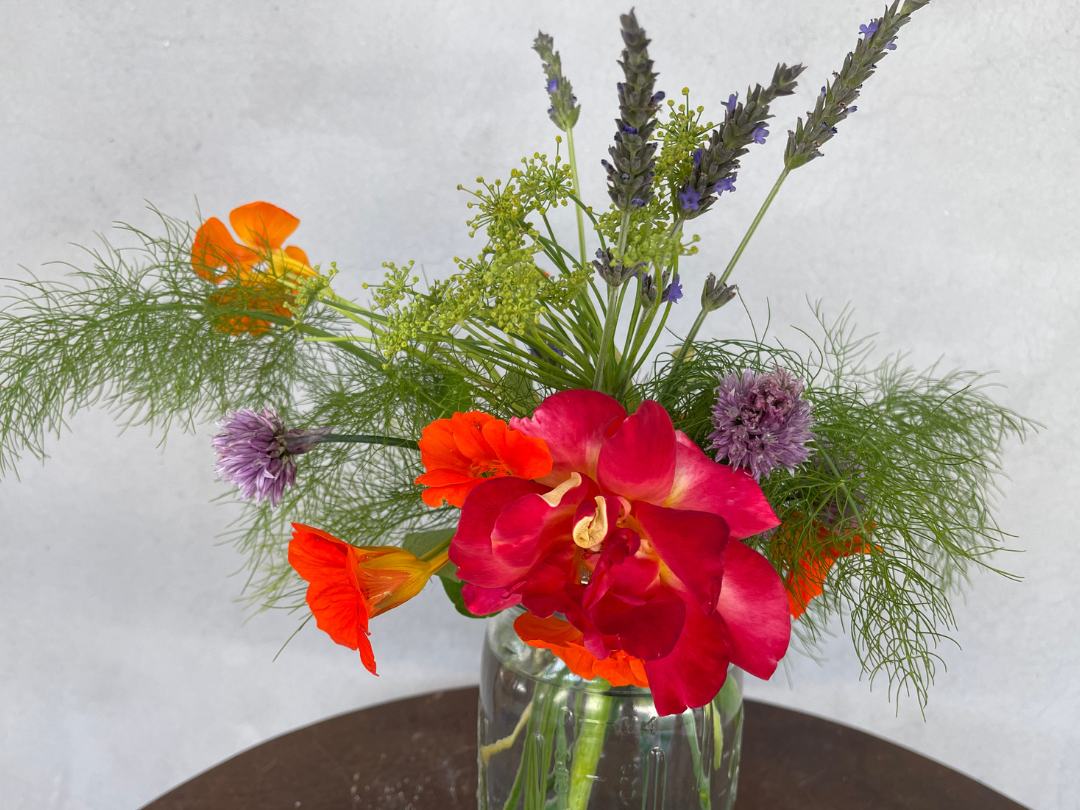
20 Edible Flowers for an Edible Bouquet
- Chamomile flowers
- Alliums
- Roses
- Lavender flowers
- Cilantro flowers
- Borage flowers
- Lovage
- Arugula flowers
- Mint
- Thyme
- Calendula
- Fennel
- Bee Balm
- Daylily
- Anise hyssop
- Hibiscus – The best edible hibiscus to use would be Hibiscus sabdariffa
- Honeysuckle
- Zinnia
- Sunflower
- Dahlias
There are other wonderful edible blossoms, of course, but I’m having trouble imagining a squash blossom lasting long in a bouquet. Or the lovely dianthus, pansies, violas, and Johnny jump ups ever having a long enough stem for a flower arrangement.
While the edible flowers themselves make a fine bouquet, there are many edible greens to add if you wish! Rosemary? Fennel stem? Kale? Sage? All great choices!
The petals can be dismantled and turned into a colorful edible flower confetti.
Nasturtium Recipes
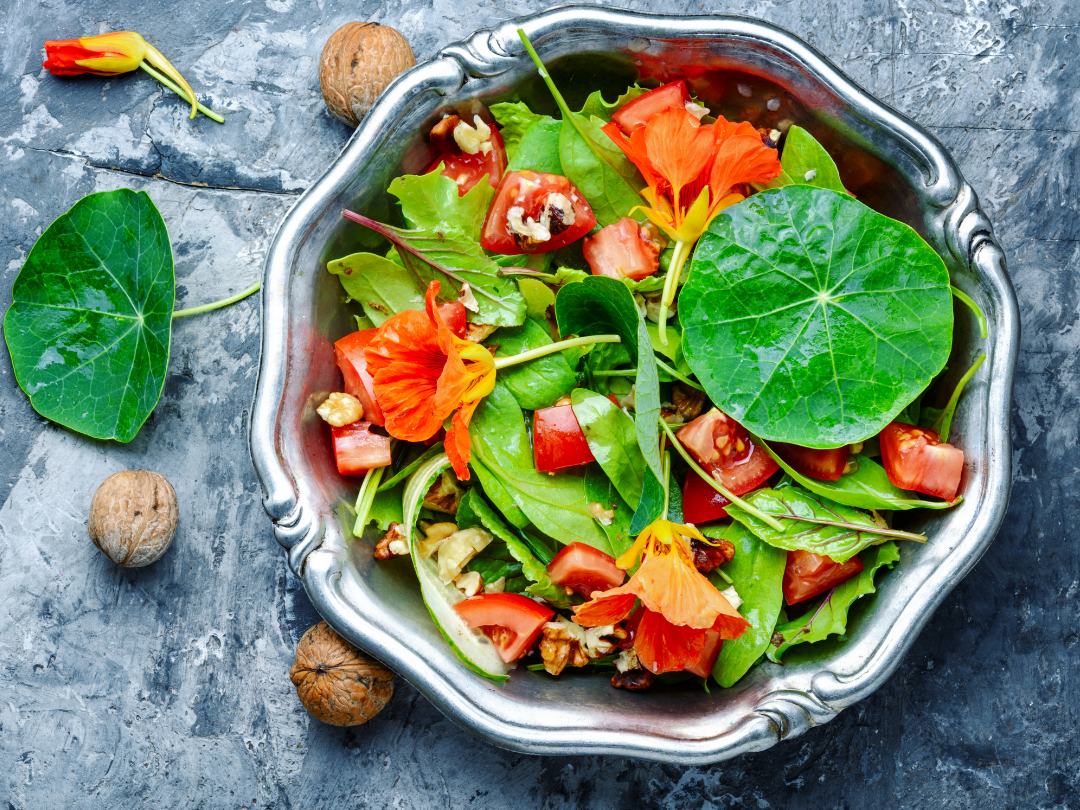
Common nasturtium uses would be to add the leaves or flowers to a salad. This year, happy to have them, I decided to stretch my culinary uses (as well as other uses) for nasturtiums.
They do have a spicy-bitter taste that needs to be considered when you use them. The taste is sometimes compared to mustard, or to a radish or even to horseradish. The flowers are usually more mild, the leaves vary, and the seedpods are very horseradish-like!
The name, nasturtium, comes from two Latin words meaning “nose twist,” which gives you an idea of how spicy and bitter they can sometimes be.
Crystalized Nasturtium
To add to a sweet, you can crystalize the flower. You dip the flower or the petal in egg white with a dash of warm water, coat in a fine sugar, and then dry on a paper towel.
Stuffed Nasturtium Flowers (Nasturtium Pops)
For stuffed nasturtiums all you need is cream cheese, garlic, chives, lemon zest, salt, or some combination thereof! You don’t need to add pepper when using nasturtium. I like to use whipped cream cheese because I find it easier to place in the delicate blossoms. I sometimes replace the garlic with smoked salmon and skip the salt and then add a thin slice of cherry tomato.
If I run out of flowers, I’ll use a nasturtium leaf. You get the idea, just put together what works for you. To make it a Nasturtium Pop you just close the flower petals.
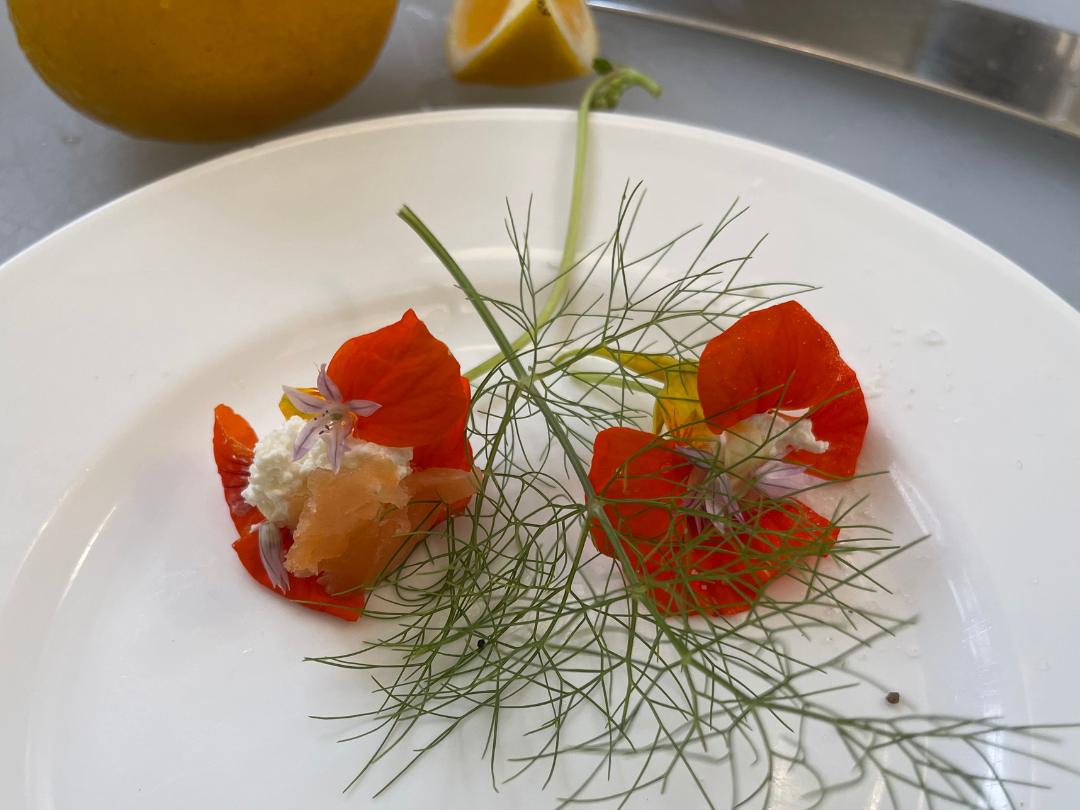
Nasturtium Shells
The larger nasturtium leaves make great wraps. I use them more like a shell. A nasturtium leaf shell for eggs is perfect. You can use any sandwich filling you’d like.
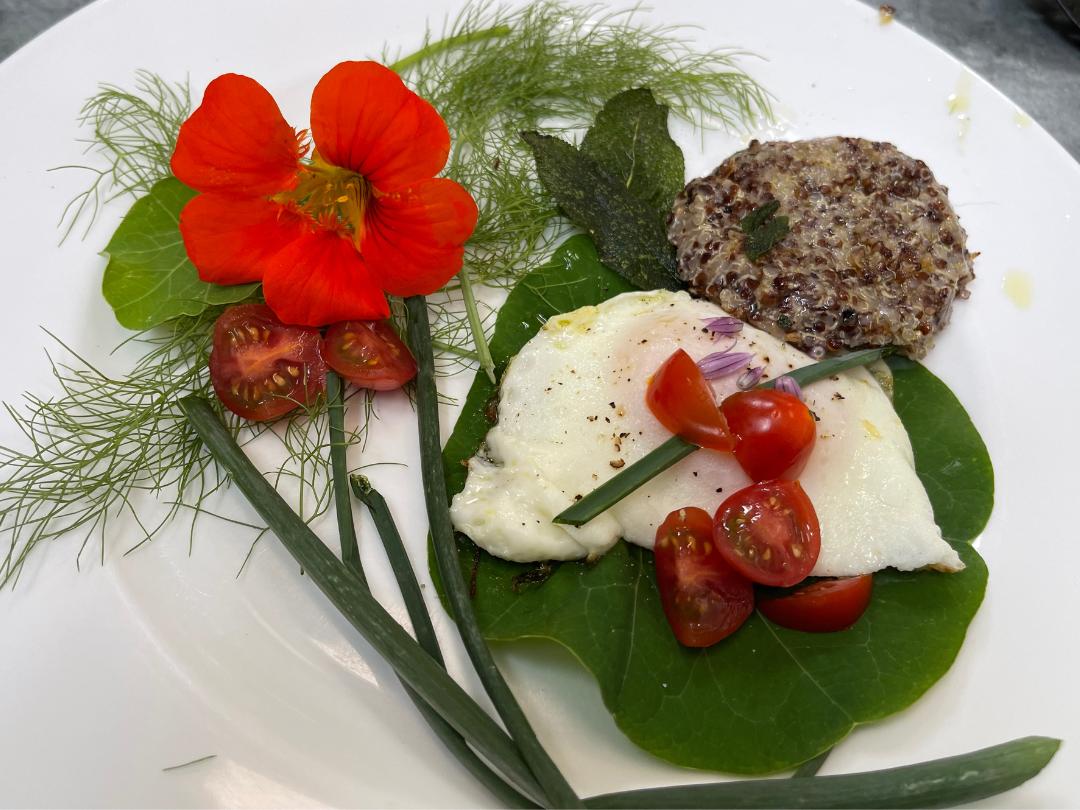
Nasturtium Chips
Nasturtium chips are beautiful and delicious – but very delicate.
Get your air fryer ready to go while you lightly coat the nasturtium leaves in olive oil and sprinkle with some sea salt. Then air fry away until crispy. The nasturtium chip will be a translucent olive green.
Nasturtium Spritzer
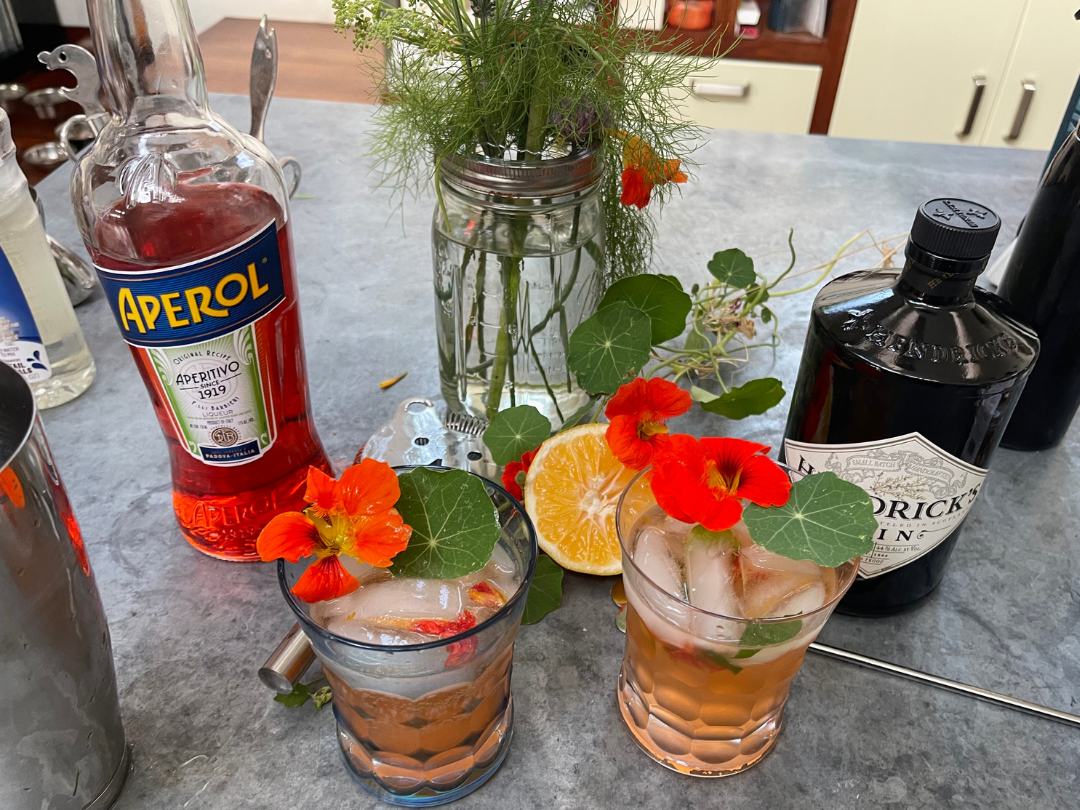
Ingredients (for one serving)
- 3 oz Gin – we use Hendricks
- 2 oz Aperol – yum
- 1-2 lemon wedges
- Nasturtium leaves and flowers
- 1/2 oz (or more) Simple Syrup – you can use store-bought Simple Syrup or make your own, or try agave simple syrup
- Bubbly water – we use Topo Chico, but even plain Club Soda will do
Directions
- Pour gin, Aperol, fresh squeezed lemon juice, and simple syrup and lemon rinds into a shaker and muddle lightly (to infuse with some of the lemon rinds).
- Add a few nasturtium leaves and flowers (how spicy do you want it?) and muddle again VERY GENTLY.
- Add ice to the shaker and give it a few shakes.
- Add ice to a glass and pour in the strained mixture and top it off with bubbly water
- Garnish with a nasturtium flower and one or two nasturtium leaves
- Adjust recipe as necessary to suit your taste!
We dunked our nasturtium décor into the drink pretty quickly to add a bit more of the peppery flavor.
More Ways to Use Nasturtiums in Recipes
The young leaves of the nasturtium can be added to salads, cream cheese dips, and made into pesto.
The green, underripe seedpods are even used in recipes. They are added to rice vinegar and made into ‘capers’. They are used as a substitute caper enough to be referred to as the “poor man’s caper”.
Watching the nasturtium pop up in the garden is a lovely reminder that summer is around the corner.
Nasturtium in the Garden
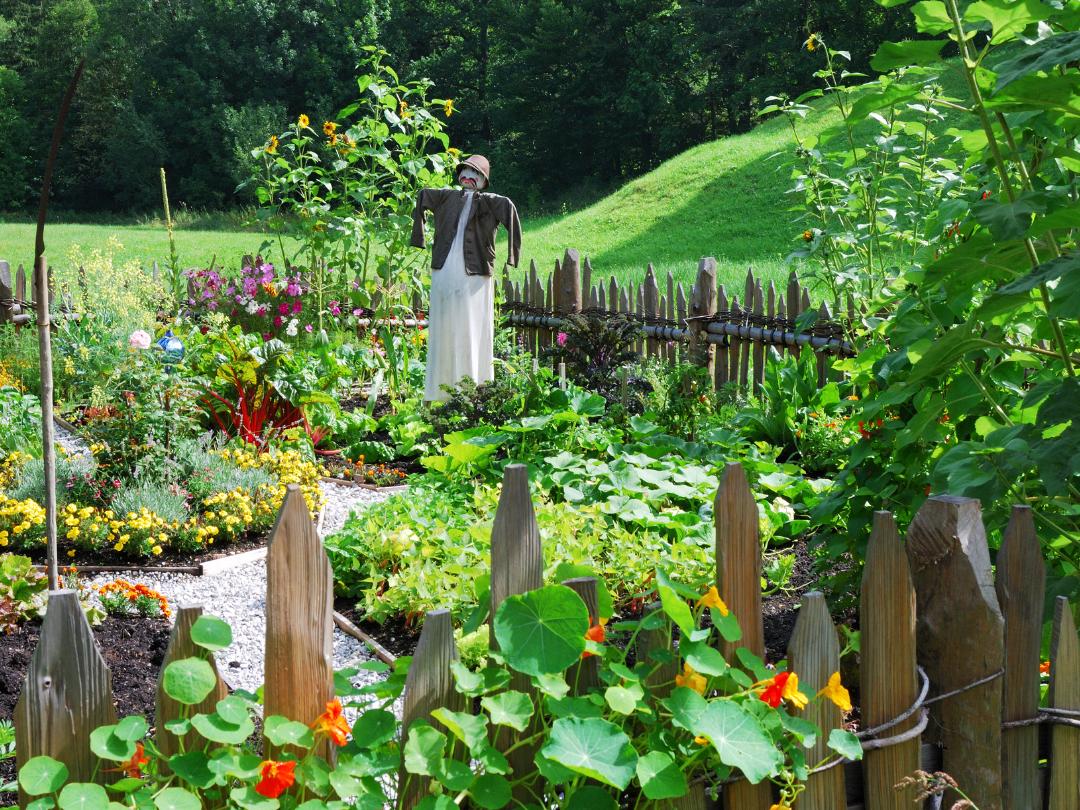
Nasturtiums serve many functions in the vegetable garden. They are edible, add color and beauty, aid in pest prevention and attract beneficial insects.
Nasturtiums are trap crops. They attract harmful pests like squash bugs and aphids to protect the more treasured nearby vegetables. They are a good companion for beans, broccoli, cabbage, cucumber, kale, melon, pumpkin, and radish.
Nasturtiums also attract beneficial insects and birds, pollinators like bees, butterflies, and hummingbirds.
Types of Nasturtium
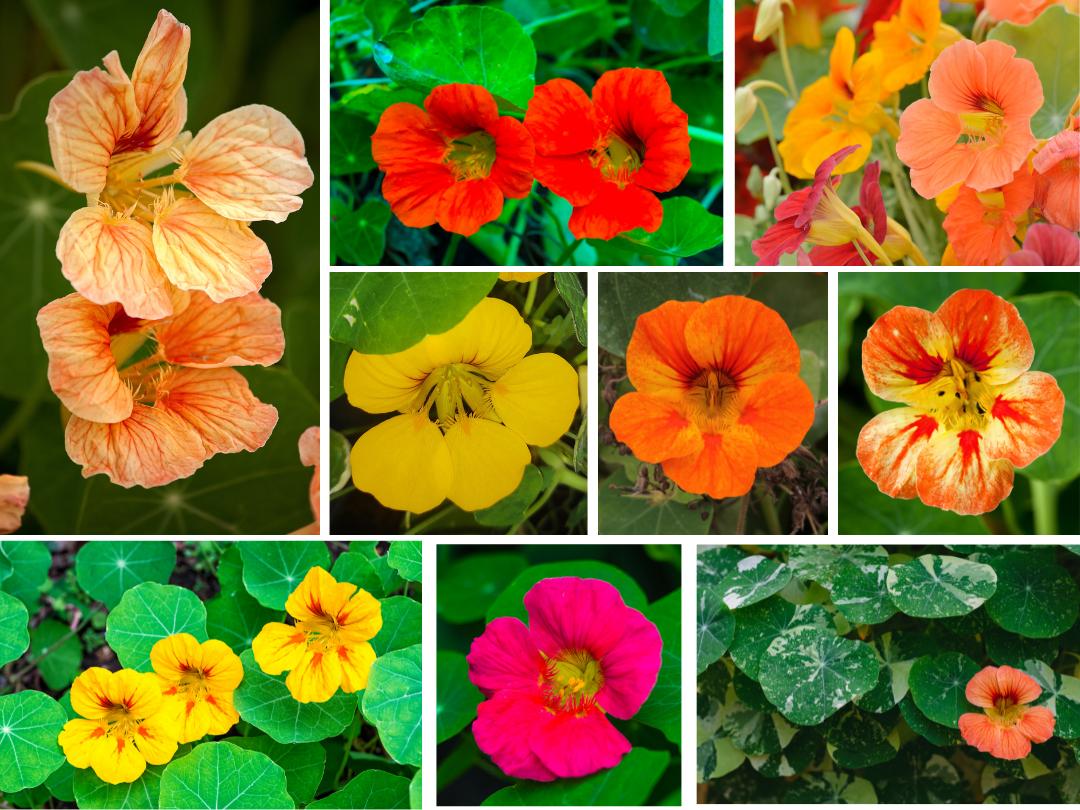
There are many varieties of nasturtiums which are divided into two main types: trailing or climbing types, and bush types.
The trailing types fall under the botanical name Tropaeolum majus, and this type of nasturtium has long vines.
The bush type is Tropaeolum minus (makes some sense). It is more compact in growth and is sometimes referred to as “dwarf nasturtium.”
The colors are wide ranging, from the more traditional bright yellow and orange to bright, pastel, and muted shades of reds, yellows, oranges, and creams. The leaves of some nasturtium varieties are variegated, adding extra interest.
For a great selection of Nasturtium seeds, check out Renee’s Garden.
Propagating Nasturtium from Cuttings
The nasturtium is one of those plants we are able to propagate by placing a stem cutting into water. Because they are so quick and easy to grow from seed, I always go that route.
Traditional Uses for Nasturtiums
Traditionally, nasturtium leaves were used on wounds. The leaves are a strong antiseptic which helps fight infections. The seeds of the plant can be ground to a paste and then painted onto fungal infections of the toenails. Also, according to the same scientific paper, nasturtium “is also applied in dermatology because it improves the condition of skin and hair.”
Let’s hear it for nasturtiums!
We partner with select companies whose products and/or services we love. Some of the links on this page may be affiliate links. If you purchase an item using our affiliate link, we may receive a small commission (at no added cost to you). We appreciate your support.

